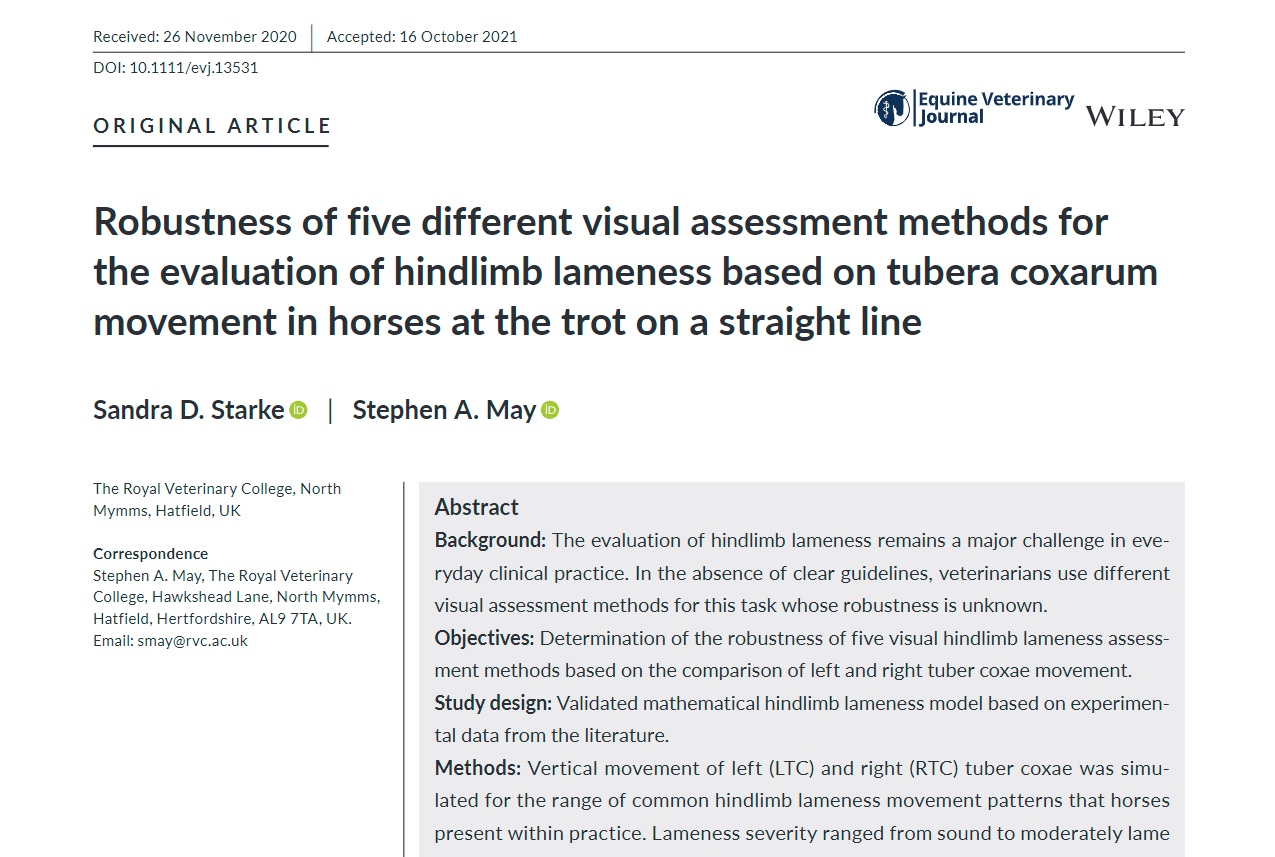We have spent a long time trying to understand why hind limb lameness can be such an odd one to assess, and combining clinical experience and observations with movement models finally gave us the answer. We very much hope that practitioners, students and scientists will find this paper useful. The paper is available FOR FREE (open access!) here at EVJ: https://lnkd.in/dTEzi7aX.
The paper includes an animated visualisation of the different hind limb lameness ‘patterns’. We hope to include more of this here on the LamenessTrainer in 2022 to practice recognising patterns. Stay tuned!
ABSTRACT
Background
The evaluation of hindlimb lameness remains a major challenge in everyday clinical practice. In the absence of clear guidelines, veterinarians use different visual assessment methods for this task whose robustness is unknown.
Objectives
Determination of the robustness of five visual hindlimb lameness assessment methods based on the comparison of left and right tuber coxae movement.
Study design
Validated mathematical hindlimb lameness model based on experimental data from the literature.
Methods
Vertical movement of left (LTC) and right (RTC) tuber coxae was simulated for the range of common hindlimb lameness movement patterns that horses present within practice. Lameness severity ranged from sound to moderately lame (0% to 60% motion asymmetry). The scenarios of a pelvis held tilted and asymmetrical pelvic roll were included to reflect possible adaptations in pelvic rotation. Across all conditions, the outcomes for five different visual assessment methods based on comparative tubera coxarum movement were quantified, including hip hike, -drop and range of motion. The robustness of each assessment method was established through comparison to sacrum-based overall motion asymmetry as the ground truth.
Results
Tubera coxarum-based lameness assessment was highly sensitive to all the unique lameness patterns and changes in pelvic rotation which a lame horse may adopt. None of the five visual lameness assessment methods was 100% robust across all conditions tested. For everyday clinical practice, comparing the upward movement amplitude of the RTC before right hind foot contact and of the LTC before left hind foot contact (Hip_hike_diff) would be the most robust single tubera coxarum-based visual assessment method.
Main limitations
In the absence of published data regarding the frequency of different movement patterns and hip rotation adaptations in clinical practice, this study cannot indicate the proportion of assessments that would be incorrect for a given visual assessment method.
Conclusions
Using a single tubera coxarum-based visual hindlimb lameness assessment method may lead to incorrect clinical judgement. Therefore, using multiple assessment methods would be beneficial to substantiate impressions.


